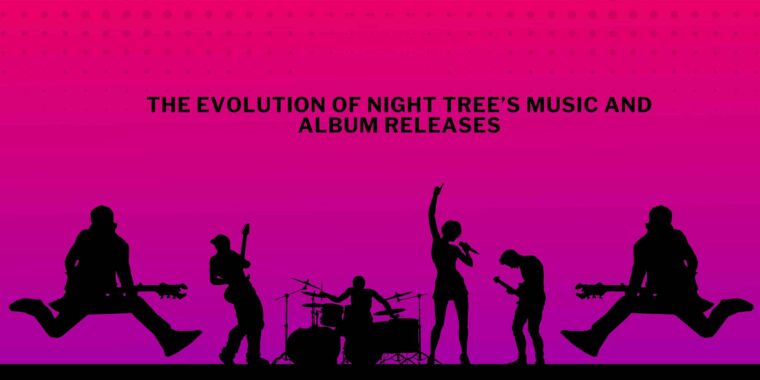Night Tree is an artistic project in multiple forms, combining architecture and music. It is a contemporary mixture of two completely different things: Architectural Solution and Night Music Band, creating an unconditionally symbiotic relationship between two art forms: architecture and music. Night Tree has developed over the years, not only by the changes in music technology and trends but also by deepening what they have been pursuing in architectural themes.
The Roots: Night Tree’s Origin Story
Night Tree was the idea of bringing together two probably conflicting worlds: architecture and music. In reality, in the early years, this composed atmospheric and ambient music to make it a more meaningful architectural experience.
This mixture of arts gave them uniqueness as they created much hype in niches that appreciated their new approach. Their early music was simple, full of instrumentals and ideas inspired by natural and urban landscapes.
First Album: Architectural Soundscapes
Their first album, Architectural Soundscapes, is a direct reflection of their founding philosophy. It was out in the time when ambient and downtempo music started to become popular, and that can be said as a hallmark of Night Tree’s style. The sparse, yet evocative music, produced by layered instrumentation, creates a feeling of space and depth.
Every record was understood in a certain kind of architectural design that may have been inspired by skyscrapers, bridges, or even public squares and the sounds to be realized. The album was critically received for its ingenuity if only a small market embraced the group at the time. Architectural Soundscapes: Securing Night Tree’s Legacy Architectural Soundscapes secured the future legacy of Night Tree as a music-architecture collaboration.
Growing Complexity: The Second and Third Albums
Whereas when Night Tree gained fame, the music developed a more mature complexity. While still an ambient and instrumental release, albums introduced elements of complexity like complicated rhythms, electronic effects, and sometimes singing. It played with ideas of balance, using harmonies and counterpoints that approximated architectural symmetry, while the next built upon the relationship between form and function, translating techniques of building into musical patterns.
These albums represent a maturation for Night Tree because, beyond the followers of architectural and music theory alone, they gained an audience much wider than that. As many critics have noted, it is interesting that the group could evolve musically without losing the essence of their unique character yet adding layers of complexity.
Fusion of Genres: A New Era in Night Tree’s Music
Night Tree was fully entering a territory of genre fusions by that point with Intersections. Where earlier work had been closely based on ambiances and electronic influences, this work was starting to take on more elements of jazz, classical, and even sometimes rock. Styles were fused because modern architecture is already a hybrid in which traditional forms often give way to innovative, unconventional designs.
Its soundscapes were composed of tracks produced by collaboration between artists of different backgrounds; such richness had not been heard before. Tracks ranged from calming, meditation ones to energetic with upbeats, reflecting the increasing versatility of the band. They were still architectural in flavor, but somehow more abstract this time, representing not only the physical structures but also those emotional and intellectual spaces architecture can create.
Thematic Shift: Storytelling Through Music
Becoming a full-fledged band, however, Night Tree’s output became more narrative than its initial focus on the translation of architectural designs into music. In reality, their release clearly defines a thematic shift from the earlier preoccupation with sound translations of designs to emotional narratives by the designs. The album is more deeply introspective, a collection of human experiences, memories, or emotions about physical spaces.
With more lyrics and a greater focus on melody, this represented the most populist release to date by Night Tree. Every track was situated within a chapter of a building’s life, its creation through a process of natural decay, and this told an album-length story. In doing so, this narrative approach that the group undertook linked them with an even wider market, as listeners could not help but hone in on the emotional undertones of the music.
The Influence of Technology: Embracing Modern Tools
Night Tree’s development also included them becoming familiar with and utilizing modern technology. Their early work was very acoustic and very uniform, for the use of traditional recording techniques at the time was the standard. Later albums used digital tools and software to create warm, full sounds. Entirely, this album was made using digital synthesizers, drum machines, and production software, embodying both human creativity and technological innovation—much like modern architecture itself.
Conclusion: A Unique Journey in Music and Architecture
But the evolution of Night Tree is, if nothing else, marvelous. A small niche project in architecture-music fusion has culminated into multiform arts creatively pushing these disciplines forward. As Night Tree explores various themes and technologies, one is drawn into the unparalleled places where sound, space, and human experience cross in their music.
